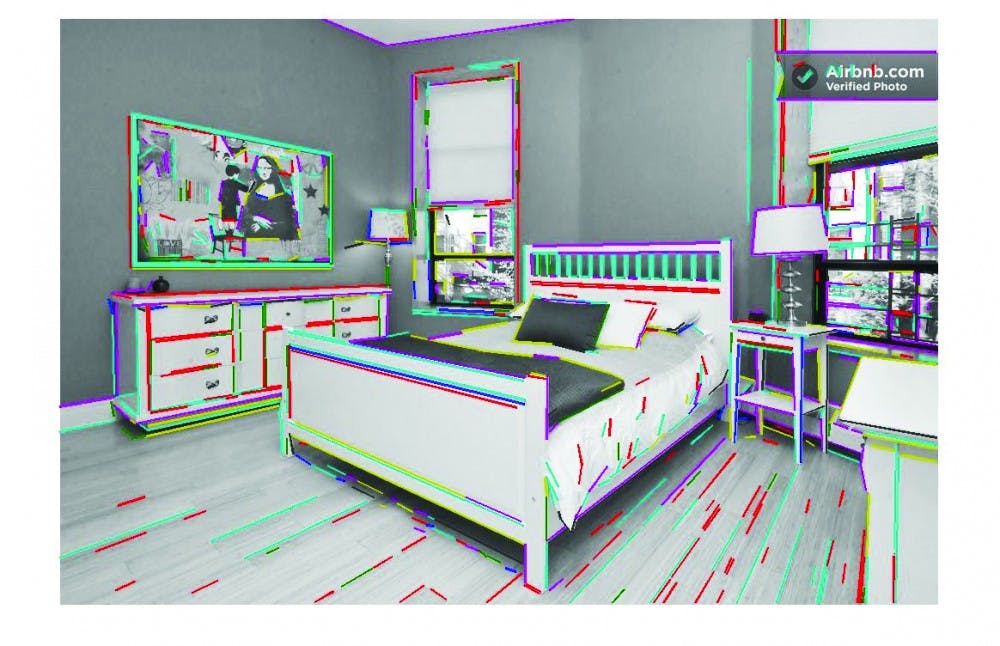
If you think online real estate websites are playing tricks on your eyes, check out a new program four Engineering seniors are developing.
The project, called Scoring and Correcting Geometric Distortions in Images, is an algorithm and a comprehensive tool that can detect artificial mutations that are applied to images. The team — made up of Engineering and Wharton seniors Tanay Mehta, Boris Treskunov, Grace Wang and Joseph Zhong — is currently focusing on distorted room pictures, primarily because brokers and retailers have a high incentive to make online images of rooms look bigger than their original size.
The tool will be distributed as a browser extension — a computer program that provides additional functions to a browser. The extension will give scores for pictures found online based on how much they are distorted from their original image.
The algorithm is a senior design project, which Engineering students must complete before graduation. Seniors usually work on topics of interest to them, applying the various skills and knowledge they have acquired during their undergraduate years.
The initial idea for the project came from a personal experience. “I lived in New York last year and the room was much smaller than what it seemed to be online,” Mehta said.
The team did some research and realized there are several distortion techniques people use to make rooms seem larger, the easiest being “panoramic stitching,” — a process that combines several images to give a 270 or 360 degree view of an area.
The group found other techniques that are more difficult to detect, including taking pictures from a low angle and using wide angle lenses that have shorter focal lengths and capture a wider view. People may also use specific graphics programs to manipulate a picture that causes radial distortion to the image.
To discern if any of these techniques were employed to distort a photo, the program uses computer vision, a field of computer science which studies how to discern the focal length of a given image.
“It’s an intersection of math and computer science,” Treskunov said. “It deals with image manipulation and analysis.”
“It’s getting the computers to see the way humans do,” he added.
The team members acknowledge that there was a “learning process” to fully understanding computer vision, even though they had previous math and programming experience.
The group has finished stand-alone ways of detecting each type of image distortion, and it now needs to integrate these techniques into a single tool.
With some adaptations, the program can also be used with other e-commerce websites such as e-bay, Craigslist or Amazon to analyze other types of images.
The Daily Pennsylvanian is an independent, student-run newspaper. Please consider making a donation to support the coverage that shapes the University. Your generosity ensures a future of strong journalism at Penn.
DonatePlease note All comments are eligible for publication in The Daily Pennsylvanian.







